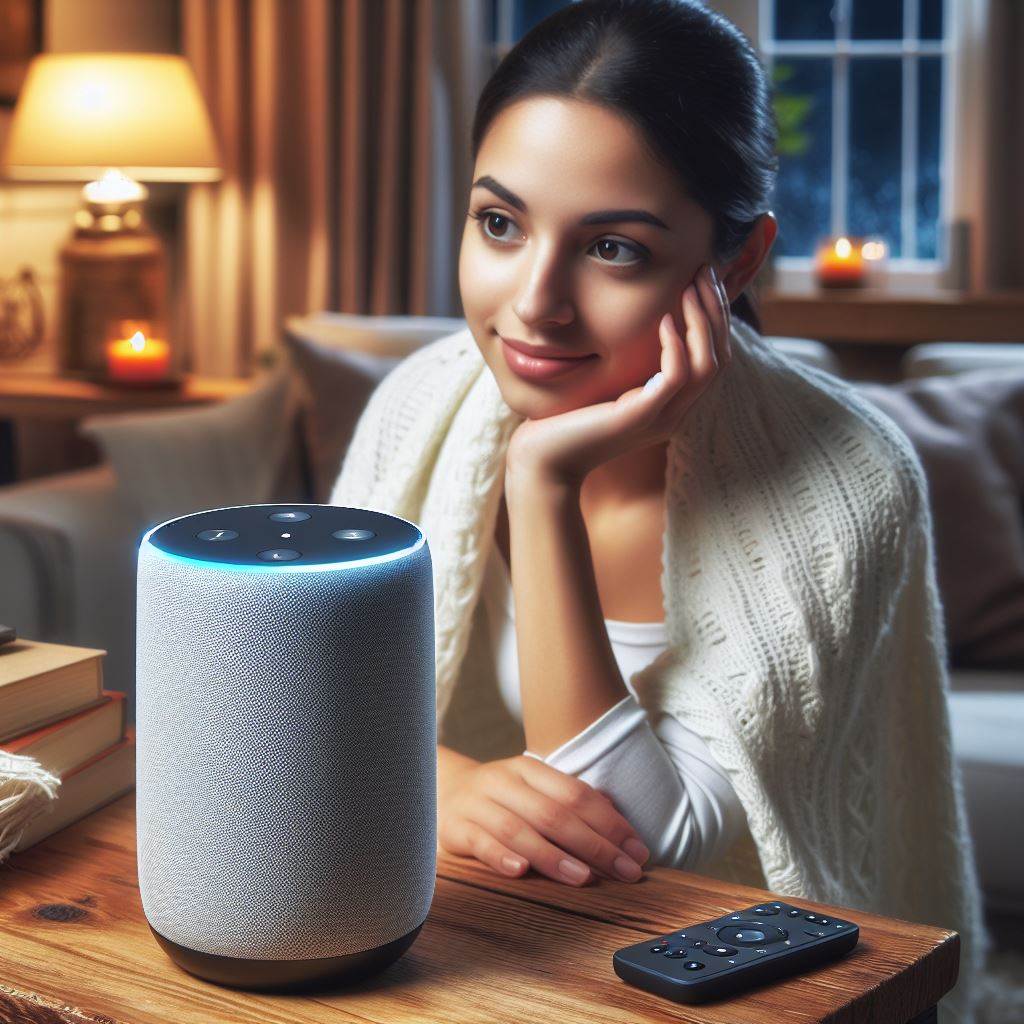Introduction
Home automation refers to the use of technology to control and automate various household tasks and systems.
With the advancement of technology, home automation has gained popularity due to its numerous benefits.
Home automation provides convenience and comfort by allowing the control of various devices and systems remotely.
It offers energy efficiency by optimizing the use of lights, heating, and cooling systems, resulting in reduced energy consumption.
Home security is enhanced through features like surveillance cameras, motion sensors, and remote locking systems.
Automated appliances and systems can be programmed to operate at specific times, improving efficiency and saving time.
Additionally, home automation can provide accessibility features, making it easier for elderly or disabled individuals to manage their homes independently.
The increasing availability and affordability of smart home devices are driving the adoption of home automation.
The integration of voice assistants and smart speakers has made controlling and managing home automation systems even more accessible.
As technology continues to evolve, the possibilities for home automation are endless, improving comfort, efficiency, and security in our everyday lives.
Home automation is a growing trend that offers convenience, energy efficiency, security, and accessibility to homeowners.
Types of Home Automation Systems
Home automation systems are a revolutionary addition to our daily lives, bringing together comfort and technology.
They provide homeowners with the ability to control various aspects of their houses with just a few taps or voice commands, making life more convenient and efficient.
Standard/Traditional home automation systems
When it comes to home automation systems, there are two main types: standard/traditional systems and advanced systems.
Each type offers different functionalities and features, catering to various needs and preferences.
Standard or traditional home automation systems are the most basic option available.
They allow homeowners to control essential functions such as lighting, heating and cooling, and security systems.
With these systems, you can easily turn on or off lights, adjust the temperature, and monitor security cameras, providing a basic level of convenience.
However, standard systems have limited integration and customization options.
They typically operate on a closed network, limiting the devices that can be connected.
This means they may not be compatible with the latest smart devices and may lack the ability to be tailored to specific preferences.
Advanced home automation systems
Advanced home automation systems offer a more comprehensive and versatile solution.
These systems integrate with a wide range of smart devices, including smartphones, voice-assistant speakers, and wearable devices.
This level of integration allows for seamless control of various functions in your home, even when you’re away.
With advanced systems, you can enjoy enhanced control and customization features.
Remote access and control capabilities enable you to monitor and adjust your home’s functions from anywhere in the world.
Programmable schedules allow you to automate certain tasks, such as turning on the lights or adjusting the temperature at specific times.
Personalized settings let you create profiles for different family members, tailoring the automation to their preferences.
The integration of smart devices and the flexibility of advanced home automation systems not only provide convenience but also enhance energy efficiency and security.
With the ability to control lighting and temperature remotely, you can ensure that energy is not wasted when you’re not at home.
Additionally, advanced security features allow you to monitor your property and receive alerts in case of any suspicious activities.
In short, home automation systems come in various types, each offering different functionalities and levels of integration.
Standard systems provide basic control over essential functions, while advanced systems offer a more comprehensive solution with a wide range of customization options.
Choosing the right system depends on your specific needs and the level of convenience and control you desire in your home.
Read: 2024’s Top Materials for Exterior Design
Key Components of Home Automation
Home automation revolves around three key components: the central hub/controller, sensors and detectors, and connected devices.
These components work together seamlessly to create a smart and efficient living space.
Central hub/controller
At the heart of any home automation system is the central hub or controller.
This device serves as the main control center, managing and orchestrating the connected devices’ operations.
It acts as a central brain, enabling communication and automation between different elements of the system.
The central hub also provides a user-friendly interface, allowing homeowners to easily control and monitor their smart home devices.
Sensors and detectors
Sensors and detectors play a crucial role in home automation.
Motion sensors are commonly used to detect movement within the home.
This information can trigger automated actions, such as turning on lights when someone enters a room or adjusting the thermostat when occupancy is detected.
Environmental sensors, including humidity and temperature sensors, provide valuable data that can optimize comfort levels and energy efficiency.
Smoke and carbon monoxide detectors ensure the safety of the household by promptly alerting homeowners in the event of a fire or gas leak.
Connected devices
Connected devices are the tangible elements of home automation that offer convenience, comfort, and security.
Lighting systems can be programmed to adjust automatically based on the time of day or specific user preferences, creating the perfect ambiance for any occasion.
Thermostats equipped with smart features learn users’ habits and adjust temperature settings accordingly, saving energy and ensuring comfort.
Security cameras provide real-time surveillance and recording capabilities, allowing homeowners to monitor their property remotely and deter potential threats.
Door locks and access control systems offer convenient keyless entry options, providing enhanced security and eliminating the need for physical keys.
Together, these key components form a comprehensive home automation system that brings comfort, convenience, and peace of mind to homeowners.
By consolidating control, automating tasks, and providing useful data, home automation makes daily life more efficient and enjoyable.
With the ability to remotely manage and monitor various aspects of their homes, homeowners can have greater control over their environment and make their lives more comfortable while embracing the wonders of technology.
Read: Smart Lighting: A Bright Idea

Benefits of Home Automation
Home automation offers numerous benefits, improving convenience, comfort, energy efficiency, and security in a home.
Increased convenience and comfort
A key advantage is the increased convenience and comfort it brings to homeowners.
With automated tasks and routines, mundane chores can be automated, saving time and effort.
For example, programmed routines can automatically turn on lights and adjust the thermostat when the homeowner arrives home.
Voice commands and smart assistants play a vital role in home automation, allowing users to control various devices using spoken instructions.
By simply saying commands like “turn off lights” or “lock the doors,” homeowners can easily manage their home environment.
The seamless integration of home automation with daily life ensures a more comfortable and personalized living experience.
From waking up to a preheated home, to having the coffee maker start brewing before stepping out of bed, home automation adapts to individual preferences and schedules.
Improved energy efficiency
Another significant benefit of home automation is improved energy efficiency.
Smart thermostats enable homeowners to regulate temperature settings and monitor energy usage, leading to reduced wastage.
Optimization of lighting control ensures lights are only on when necessary, resulting in further energy savings.
By reducing energy consumption, home automation also contributes to lower utility costs, benefiting both the environment and the homeowner’s wallet.
Enhanced home security and safety
Home automation significantly enhances home security and safety.
Remote monitoring and alerts provide real-time updates on security breaches, allowing homeowners to take immediate action.
Access control systems, such as smart locks and security cameras, offer an additional layer of protection against unauthorized entry and enable remote surveillance.
Knowing their home is secured, homeowners can find peace of mind and feel confident in the safety of their property, even when away.
In essence, home automation brings a wide range of benefits to homeowners.
Increased convenience, comfort, energy efficiency, and enhanced security and safety are just some of the advantages.
As technology continues to advance, the potential for home automation to improve the quality of life becomes even more promising.
Read: Color Trends 2024: Bold in Modern Homes
Potential Challenges and Considerations
Advancements in technology have taken home comfort to a whole new level.
From turning on lights with a voice command to adjusting the thermostat remotely, home automation offers convenience and efficiency.
Implementing such advanced systems comes with its own set of challenges and considerations.
Initial costs and installation
A major factor to consider is the initial costs and installation process.
Compared to traditional home setups, incorporating advanced home automation systems requires a higher upfront investment.
The price tag can be a deterrent for some homeowners, especially those on a tight budget.
Homeowners must choose between professional installation services or taking the DIY route.
Hiring professionals ensures proper installation and integration, but it can be more expensive compared to setting up the system on your own.
Reliability and compatibility issues
Reliability and compatibility are two significant concerns when it comes to home automation.
To operate seamlessly, these systems rely heavily on stable internet and network connectivity.
Interruptions in internet service or network issues can disrupt the functioning of home automation devices.
Compatibility with existing devices and systems should be thoroughly assessed to avoid compatibility issues during installation.
Ensuring smooth integration is crucial to maximize the benefits of a home automation system.
Privacy and cybersecurity concerns
Privacy and cybersecurity are growing concerns in today’s connected world.
With home automation, the increased connectivity poses potential risks. Home automation systems need robust protection against hacking attempts to safeguard the privacy and safety of residents.
Implementing strong security measures, such as unique passwords and encryption techniques, is essential to prevent unauthorized access.
Homeowners must also prioritize data privacy and establish secure networks to protect sensitive information transmitted through the automated systems.
Furthermore, homeowners should be aware of potential cybersecurity vulnerabilities in their home automation systems.
Regular software updates and patches should be applied to keep the system up to date and protected against new threats.
It is essential to choose reliable and reputable manufacturers and service providers that prioritize cybersecurity.
In a nutshell, while home automation offers unmatched comfort and convenience, there are several challenges and considerations to address.
Initial costs and installation process, reliability and compatibility issues, as well as privacy and cybersecurity concerns, are all important factors to take into account.
Homeowners need to carefully weigh the benefits against the potential drawbacks and make informed decisions when implementing home automation systems.
By addressing these challenges diligently, individuals can embrace the potential of technology while ensuring a safe and secure home environment.
Read: The Rise of Smart Kitchen Tech
Future Trends and Innovations in Home Automation
As the world hurtles toward an increasingly digital future, the realm of home automation stands as a shining example of how technology can seamlessly integrate with our daily lives.
In this section, we’ll explore the future trends and innovations that promise to elevate home automation to new heights.
Expansion of integration with Internet of Things (IoT)
The heartbeat of the future home lies in its ability to connect seamlessly with the Internet of Things (IoT).
Imagine a home where your refrigerator talks to your thermostat, optimizing temperature settings based on your daily schedule.
This level of integration is not a distant dream but a burgeoning reality.
The expansion of IoT in home automation will usher in an era where devices collaborate intelligently, enhancing efficiency and convenience.
Artificial Intelligence and machine learning integration
The true magic of home automation lies in its ability to learn and adapt.
Artificial Intelligence (AI) and machine learning are set to propel this magic into realms previously unexplored.
Picture a home that anticipates your preferences, adjusting lighting and temperature based on your mood and habits.
As AI evolves, home automation systems will become increasingly adept at understanding and catering to individual needs, creating a truly personalized living experience.
Voice-first technology and natural language processing
The rise of voice-first technology is reshaping the way we interact with our homes.
Natural Language Processing (NLP) is set to become the bridge between humans and their automated abodes.
Imagine commanding your home with a simple voice prompt, and it not only understands but also responds intelligently.
This hands-free approach to control not only enhances convenience but also marks a significant leap toward a more accessible and inclusive home environment.
Enhanced energy management and sustainability features
In an era where environmental consciousness is paramount, home automation is stepping up its game in energy management and sustainability.
Smart homes of the future will not only optimize energy usage but also generate insights to help homeowners make eco-friendly choices.
From solar panel integration to intelligent HVAC systems, the focus is on creating homes that contribute to a greener, more sustainable world.
As we stand at the cusp of these transformative innovations, one thing is clear – the future of home automation is not just about technology; it’s about redefining the very essence of home, where comfort seamlessly meets tech.
Conclusion
Throughout this post, we have explored the incredible benefits that home automation brings to our lives.
From increased comfort and convenience to energy efficiency and enhanced home security, the advantages are numerous.
However, we must also acknowledge the potential challenges that come with integrating technology into our homes, such as privacy concerns and the initial cost of installation.
With the rapid advancements in technology, home automation has become more accessible and affordable than ever before.
We encourage readers to take advantage of this opportunity and explore the various home automation options available in the market.
Whether it’s starting small with a smart thermostat or diving into a whole-house automation system, the possibilities are endless.
The merging of comfort and technology through home automation has revolutionized the way we live.
Our homes have become smarter, adapting to our needs and making our lives easier.
By embracing this merging of comfort and technology, we can create a more enjoyable and efficient living environment for ourselves and future generations.




